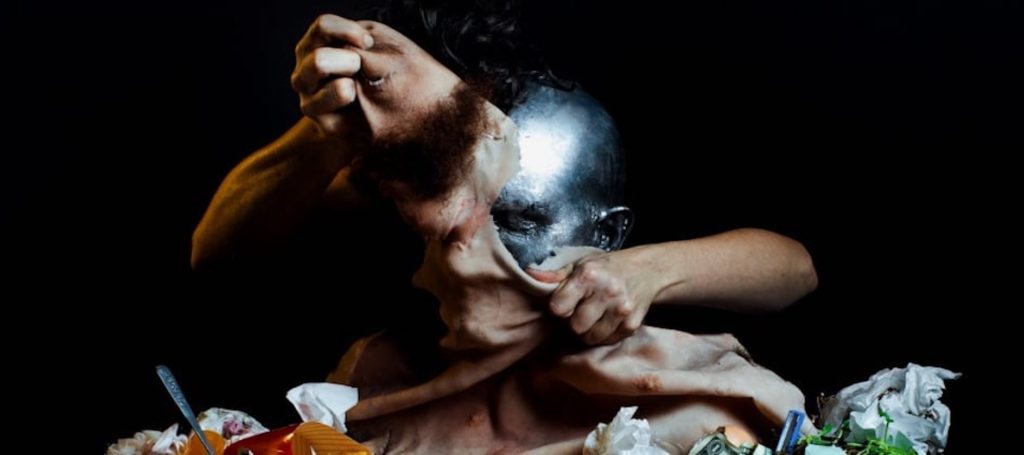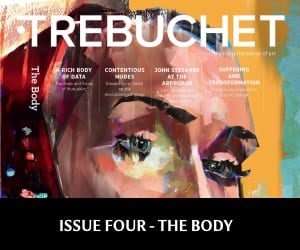[dropcap style=”font-size:100px; color:#992211;”]L[/dropcap]os Angeles based sculptor Sarah Sitkin makes uncanny art. Anatomical sculptures created from silicone clay, plaster, resin and latex convey psychological themes on which the viewer is simultaneously attracted and disturbed.
Containing liberal inferences to surrealist works which in turn reference classic European painting, there is a presence and verve in her work which is sharply original.
Primarily exhibiting on the West Coast of America, her reputation, bolstered by social media and select viewings in Europe, is extending to a wider audience. Challenging the tropes and methodology of her previous work, Sitkin is an evolving artist whose recent work displays an increasing engagement with audience perceptions of the body. Her March (2018) exhibition of Bodysuits allowed participants to wear a variety (race, sex, age) of meticulously detailed body forms, re-contextualising the role of the viewer in sculpture in the process. This is a particularly charged site of creativity regarding contemporary polemics around the perception of the human form as it relates to art, containing as it does central ideas of being, heteronormality. appropriation and change.
Discussing her relationship with the human form, Sitkin allowed Trebuchet into the techniques and perspectives she employs in her arresting art.
How do you define the body?
I think about this all the time: the divide between my body and myself. I feel the self exists in my brain, and that I’m still myself even if my body changes. I view the body as purposeful in scientific terms—for example, its symbiotic relationship with the many forms of bacteria it houses—but in terms of the survival of the self, I view the body as unnecessary, a very limited vessel that we are confined to during our lives. What isn’t a challenge about having a body? In my work, the body requires very careful consideration and management, particularly when lifecasting models. Creating and maintaining a supportive emotional environment for models is probably the most challenging aspect, since making a mould takes some time from start to finish, and you have to consider their physical needs and safety throughout a process that employs very dangerous materials… I mean, if you are not precise and careful during the moulding process, you could literally kill someone.
The body is also in constant flux, which is almost impossible not to record when making a lifecast; dicks get soft, nipples get hard, posture changes under the weight of materials during cure time, even breathing… This is tough. You have to deal with the fact that the duration of the mould appointment from beginning to end will almost always dictate a result different from the form you started with.
In what way do you feel you’ve pushed your conception and application of the body?
I don’t think I’ve done anything particularly new or revolutionary with pushing the conception or application of the body…
Read this article in full in Trebuchet 4 – The Body

The aim of art is to represent not the outward appearance of things, but their inward significance. – Aristotle



















